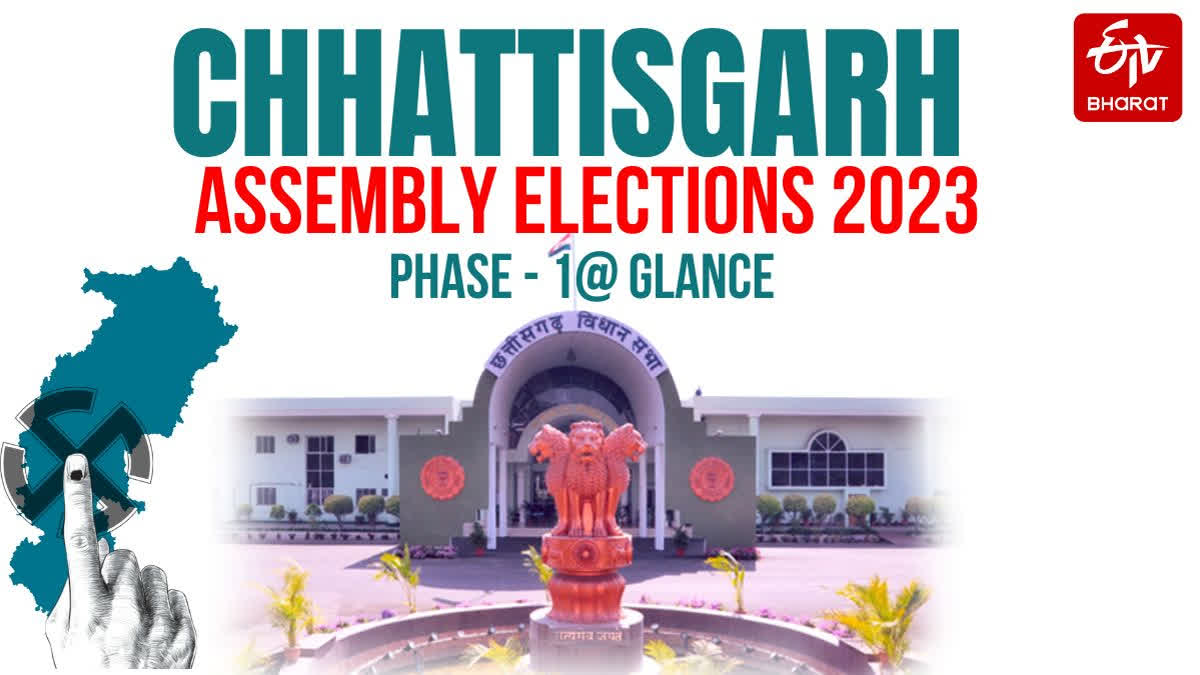Raipur (Chhattisgarh): The electoral battleground in Chhattisgarh has come alive as the state gears up for the 2023 Assembly Elections. In the first phase of voting to be held on Tuesday (Nov. 7), 20 crucial constituencies are up for grabs, with a total of 223 candidates vying for the trust of the electorate. With over 40 lakh voters set to make their voices heard, this election holds the promise of shaping the political landscape in this central Indian state.
A unique gender balance
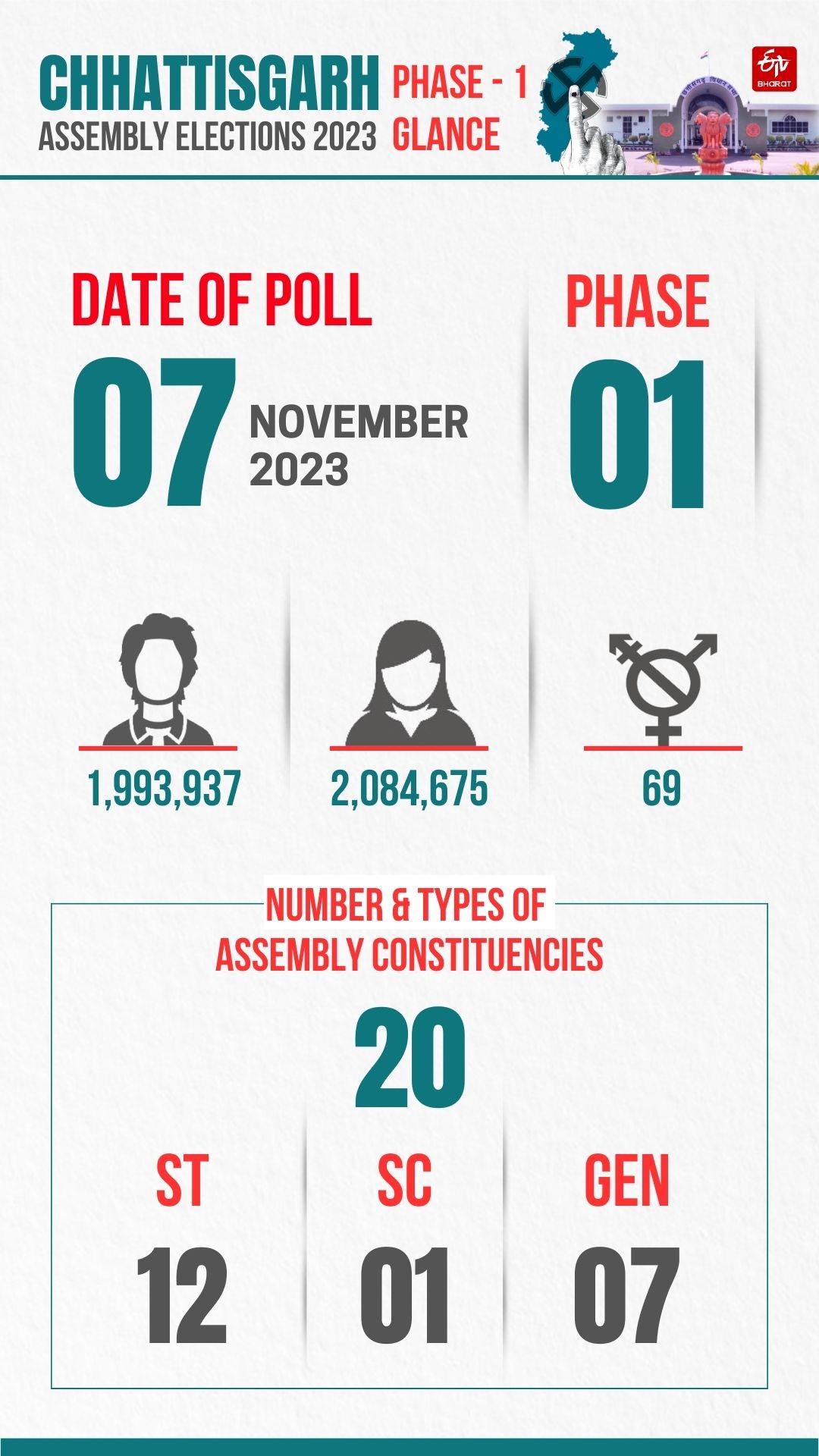
One striking feature of the Chhattisgarh Assembly Elections 2023 is the notable participation of women voters. Of the 40,78,681 eligible voters, 20,84,675 are women, demonstrating a balanced participation from both genders in the democratic process. This participation reflects the commitment of Chhattisgarh to promoting gender equality and inclusivity in the electoral process.
Diverse representation

The first phase of voting will see candidates compete across 20 constituencies, encompassing a variety of seats including 12 Scheduled Tribe (ST), one Scheduled Caste (SC), and seven general seats. In particular, all 12 assembly seats within the Bastar division are set to witness intense electoral battles. These include Konta, Bijapur, Dantewada, Chitrakot, Jagdalpur, Bastar, Narayanpur, Kondagaon, Keshkal, Kanker, Bhanupratappur, and Antagarh. Additionally, the remaining eight seats include Mohla-Manpur, Khujji, Dongargaon, Rajnandgaon, Dongargarh, Khairagarh, Kawardha, and Pandariya. This extensive electoral engagement spans across 11 districts, offering a diverse range of choices to the voters.
The field of contenders
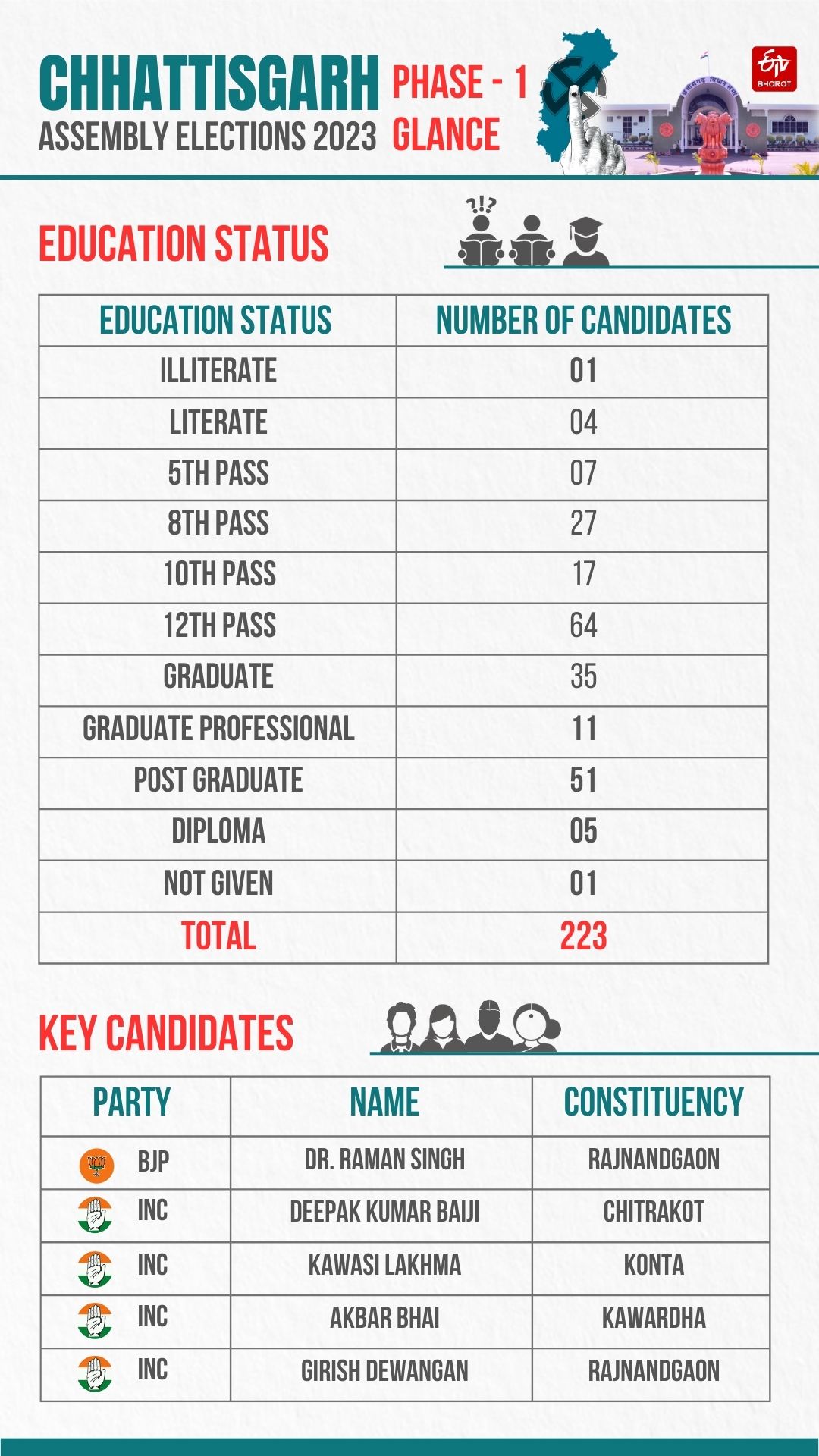
A total of 223 candidates have thrown their hats into the ring, with 198 men and 25 women seeking to represent the people of Chhattisgarh. Notably, Rajnandgaon has the highest number of candidates, with 29 individuals competing for the seat, while Chitrakote and Dantewada have the lowest number of candidates, with just seven contenders each. Among the candidates, the seasoned Raman Singh, a prominent BJP leader and former Chief Minister of Chhattisgarh, is standing for election from the Rajnandgaon seat at the age of 71. His presence adds depth and experience to the electoral landscape.

Polling schedule
The voting schedule is meticulously organized to ensure every voter has the opportunity to participate. In some areas, polling begins as early as 7 am and concludes at 3 pm. The constituencies operating on this schedule include Mohla-Manpur, Antagarh, Bhanupratappur, Kanker, Keshkal, Kondagaon, Narayanpur, Dantewada, Bijapur, and Konta. Meanwhile, other areas offer voting from 8 am to 5 pm, ensuring maximum voter turnout. These constituencies include Pandaria, Kawardha, Khairagarh, Dongargarh, Rajnandgaon, Bastar, Jagdalpur, and Chitrakot.
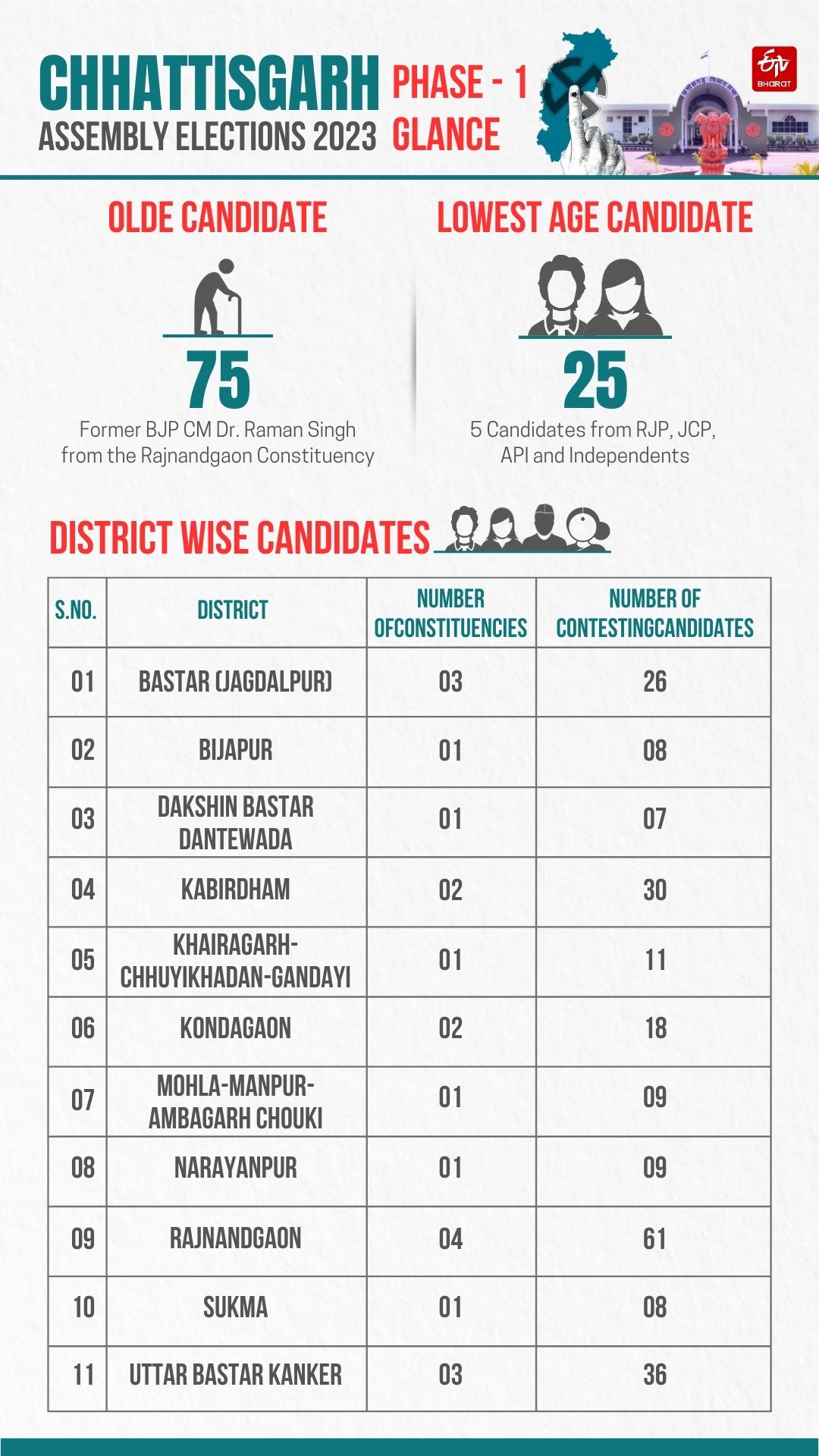
Party line-up and independent candidates
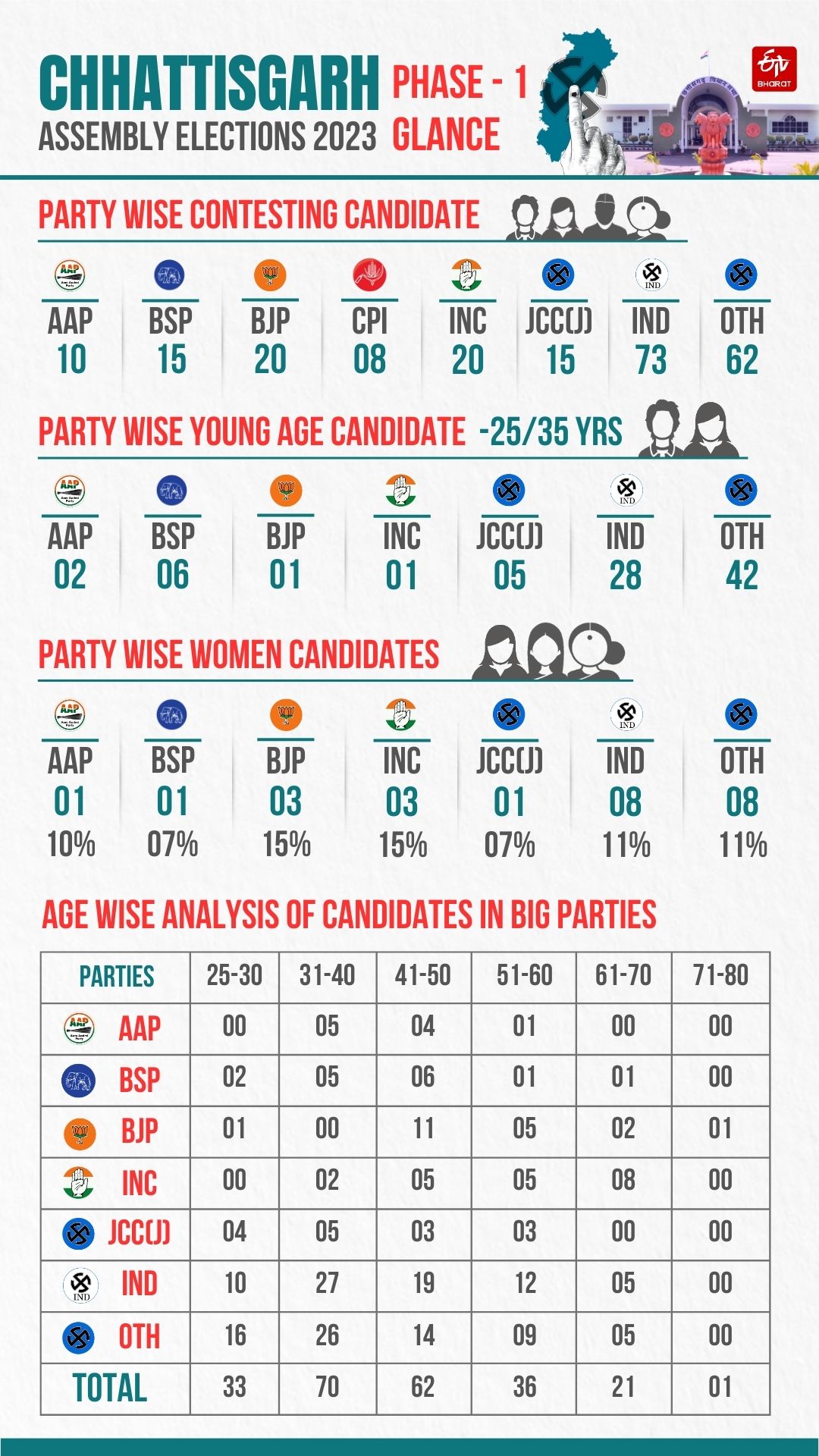
In the first phase of elections, the major political parties, such as the Bharatiya Janata Party (BJP) and the Indian National Congress (INC), have fielded candidates across all seats. The Janta Congress Chhattisgarh (JCCJ) and the Bahujan Samaj Party (BSP) each have candidates running in 15 seats, while the Communist Party of India (CPI) has entered the fray on eight seats. Notably, 73 independent candidates are also in the race, contributing to the diversity of the electoral contest. Among the candidates, there are 25 women vying for seats, with JCCJ fielding the highest number at eight, while BJP and INC have three and one-woman candidate(s), respectively.
Wealth and criminal backgrounds

The financial backgrounds of the candidates also make for an intriguing aspect of the elections. Some candidates have declared substantial wealth, making them "crorepati" contenders. Khadgraj Singh of the Aam Aadmi Party, contesting from Kawardha, tops the list with assets exceeding Rs 40 crore. Following closely is Bhavana Bohra, the BJP candidate from Pandariya, with assets worth more than Rs 33 crore. In total, 46 crorepati candidates are in the fray, while 106 candidates possess assets of less than Rs 10 lakh. Additionally, about 12 percent of the candidates have criminal backgrounds, emphasizing the need for vigilant monitoring of the electoral process.

Sensitive constituencies
The Chhattisgarh Assembly Elections 2023 carry significant security considerations, with five out of the 20 assembly constituencies falling within the red zone, signifying their sensitive nature. In response to these challenges, robust security arrangements have been put in place to ensure the safety and integrity of the electoral process. Over 600 polling stations in the Naxal-affected Bastar division are being closely monitored by an extensive deployment of security personnel, with a combined force of 40,000 Central Armed Police Force (CAPF) personnel and 20,000 state police officers. Furthermore, elite units such as the anti-Naxal unit Cobra and women commandos are an integral part of the security apparatus, ensuring a strong defence against any potential threats.
In addition to the security forces on the ground, 149 polling stations across five assembly constituencies have been relocated to nearby police stations and security camps to enhance security. Drones and helicopters will be deployed for surveillance and monitoring of Naxalite activities, further bolstering the security measures in place. Bomb disposal teams and dog squads are also standing by to respond to any potential security challenges.
The Chhattisgarh Assembly Elections 2023 have entered a crucial phase, and the outcome of the first round of voting will set the tone for the rest of the electoral process. With an impressive number of women voters, diverse candidates, and security measures in place, Chhattisgarh is poised to make its voice heard in the realm of Indian democracy. As the state exercises its democratic rights, it remains to be seen how the people's will shall shape the future of Chhattisgarh.
Also read:
